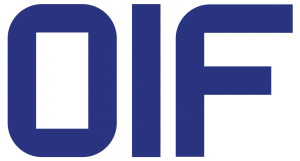OIF Publishes Transport SDN Framework Document
Key Findings from 2014 Demo Inspires Framework Architecture
Fremont, Calif. – May 19, 2015 –Following a 2014 prototype demonstration event, the Optical Internetworking Forum (OIF) has approved an SDN Framework whitepaper that paves the way for implementation of SDN in Carrier Networks. The whitepaper, titled “Framework for Transport SDN: Components and APIs”, documents the SDN framework for multi-domain carrier networks. It identifies critical open APIs for Transport SDN based on synthesis of the SDN layered architecture and the ITU-T ASON functional element model for optical network control.
SDN identifies interfaces separating infrastructure and control layers, and control layer from application layer. The interface between infrastructure and control layers is termed the SouthBound Interface or SBI, the interface between control and application layers is termed the NorthBound Interface or NBI, and provides APIs to the application.
“In 2014, the prototype demonstration brought together multiple vendors and carriers to test cloud-bursting services, utilizing SDN principles and interfaces,” said Lyndon Ong of Ciena and co-chair of the OIF Market Awareness & Education Committee. “The demonstration results factored into the development of a framework that allows SDN to be deployed over a carrier’s network with multiple, diverse domains.”
One of the key findings from the demonstration was that the separation introduced by the NBI and SBI enables SDN to be applied over greenfield (i.e., OpenFlow) and brownfield environments, allowing integration of domains controlled by management systems and domains using existing distributed control planes as well as centralized SDN. A variety of SBI protocols could coexist in the carrier’s Transport SDN network, including the OpenFlow protocol, with extensions for optical networks.
NBI is an area of particular importance; by providing access to ASON functional elements, the NBI opens up access to the network control plane and provides greater programmability of services, improving the speed of service deployment and overall manageability of the network. Functional elements accessible via NBI in this framework include Call Control, Connection Control, Topology and Path Computation.
The document assesses where existing protocols may be used to support NBI access. In addition to existing protocols, there are benefits from defining new REST-based interfaces such as were prototyped in the demo, based on a common information model.
For a copy of the SDN framework document http://www.oiforum.com/documents/technical-white-papers/
About the OIF
The OIF facilitates the development and deployment of interoperable networking solutions and services. Members collaborate to drive Implementation Agreements (IAs) and interoperability demonstrations to accelerate and maximize market adoption of advanced internetworking technologies. OIF work applies to optical and electrical interconnects, optical component and network processing technologies, and to network control and operations including software defined networks and network function virtualization. The OIF actively supports and extends the work of national and international standards bodies. Launched in 1998, the OIF is the only industry group uniting representatives from across the spectrum of networking, including many of the world’s leading service providers, system vendors, component manufacturers, software and testing vendors. Information on the OIF can be found at http://www.oiforum.com

